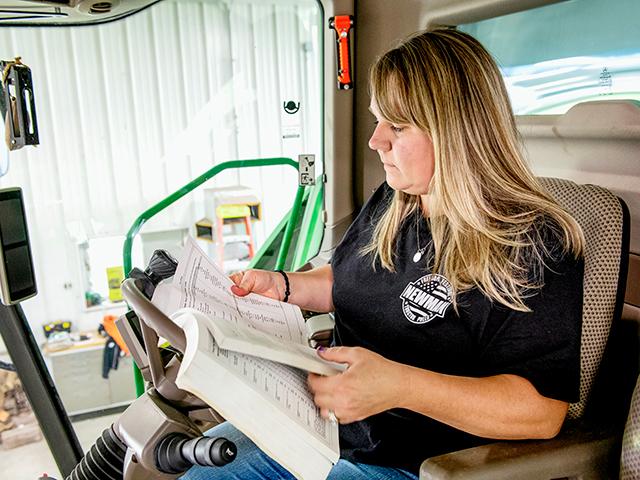Dr. Dan Talks Agronomy
Tips for Fall Tillage
What is your goal for fall tillage? Is it to process residue, blacken the soil or break compaction layer? Perhaps you want to incorporate fertilizer and soil amendments like compost, gypsum, lime or manure. Maybe you need to incorporate cover crop seed. The task determines the tool to select and in some cases, one tool can complete several tasks.
MANAGING COMPACTION
Compaction is a by-product of the way we farm. Trafficking with large equipment in soil conditions that aren't ideal is sometimes necessary to get things done. To avoid compaction, know your fields and soil conditions, don't drive on soil when moisture is at or above field capacity. Use large diameter rims and tires or tracks to lower surface pressure. Drive only on established trafficking lanes. To remediate compaction, identify the depth and till only to the depth needed to break up the compacted layer and use a shank and point that lifts and fractures while keeping the profile relatively intact and consolidated.
BLACKENING THE SOIL
Many growers, especially those who farm heavier and blacker bottom soils, like to work the soil in the fall to blacken the surface so it warms up and dries out more quickly in the spring. The tool for this task can be a chisel, disk or a combination disk ripper. Chisels can be run to a depth of 8 to 10 inches, breaking up the soil to eliminate any density layers while stirring the soil to blacken the surface and partially incorporate residue. Disks can be run at a depth of 4 to 6 inches and blacken the surface and incorporate more residue, but keep in mind that disc blade concavity exerts shearing forces that break down soil structure and increase bulk density. Either tool works to open up and blacken the soil, but the key to reducing compaction risk is to do it when the soil is in a good tillable condition (i.e. crumbly when you rub it between your fingers).
P[L1] D[0x0] M[300x250] OOP[F] ADUNIT[] T[]
PROCESSING RESIDUE
Too much corn residue or residue that doesn't decay fast enough and impedes the next crop is a common complaint. Thanks to good genetics, Bt traits, stay green characteristics and superb plant health, stalks don't decay as they did a decade ago.
Today many growers use tillage to process cornstalks and there are many options. The key is to size the residue into 4 to 6-inch chunks while fracturing (crushing) the sidewalls of the stalk and then, throw a little soil on top so soil microbes can begin to feast on the material. The sooner soil and residue come together in the fall, the quicker decay begins. Rippers, disks and disk rippers size the residue and tie it down while blackening the soil. Today's vertical tillage tools are excellent at sizing and crushing residue, but their ability to tie the residue down with soil varies based on the design of the machine. It's important to mix some soil with residue to kick-start decay and also tie it down so it doesn't move with wind and water.
INCORPORATING MATERIALS
Incorporating manures, compost, fertilizers and soil amendments (2 to 4 inches) and cover crop seed (1 to 2 inches) is probably the lowest on the list of reasons for fall tillage, but equally important. Incorporating fall applied phosphorus and potassium keeps more of it for the crop. Leaving it on the surface creates more risk of loss from erosion and runoff.
Composts and manures should be incorporated to reduce odors and keep more for the crop and prevent movement by wind. Amendments like lime and gypsum should be incorporated to speed up solubility and reactivity while keeping it in place in the soil. Cover crop seed can be planted very quickly and efficiently by broadcasting and then lightly incorporating it with a shallow tillage tool. A light disk works well for incorporation to a depth of 2 to 4 inches and vertical tillage works well to a depth of 2 inches.
If you are planning fall tillage make sure the tool and its actions matches the task you want to accomplish. If all you want to do is process residue and incorporate cover crop seed, vertical tillage tools are good choices. If you want to blacken the soil while processing residue you will need a more aggressive tillage tool like a chisel, disk or vertical tillage tool with concave blades and gang angles. Removing compaction means ripping and fracturing the density zone.
Dan Davidson can be reached at AskDrDan@dtn.com
(PS/CZ)
Copyright 2016 DTN/The Progressive Farmer. All rights reserved.



